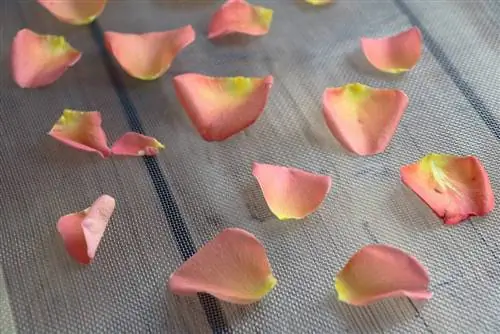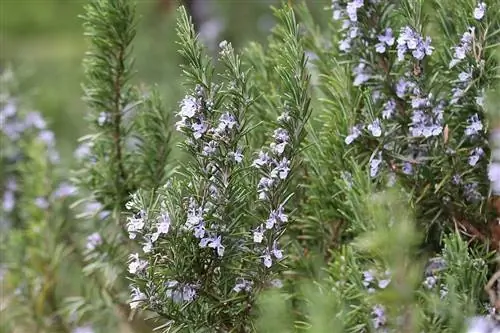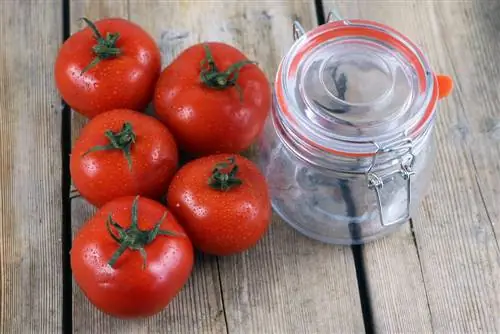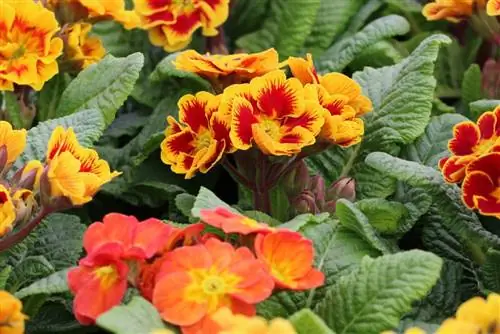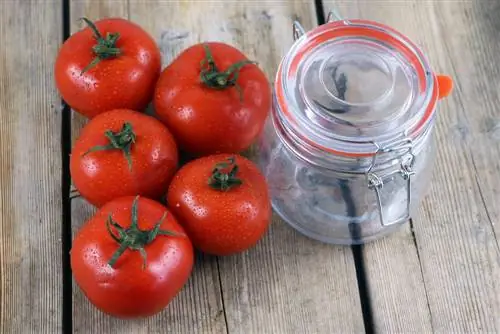- Author admin [email protected].
- Public 2023-12-17 03:39.
- Last modified 2025-01-24 12:45.
Flowers can be used to express your feelings, which is why women especially love them. There is the right one for every occasion and every taste. They represent impermanence and transience. Unfortunately, the splendor is usually short-lived. But that doesn't have to be the case, because with the right techniques and materials you can enjoy them for much longer.
Methods for preserving flowers
There is a lot of truth in the saying 'Flowers say more than 1000 words'. Roses are the best example of this. It's just a shame that the shelf life of fresh plants is significantly limited. But why not simply extend the shelf life of beautiful flowers or flower heads, for example by preserving them. It is important to start preserving immediately after cutting. This is possible in different ways.
With glycerin
One of the most common ways to preserve plants is glycerin or glycerol, a sugar alcohol. It has the ability to bind a lot of moisture. In addition to glycerin from the pharmacy, you need warm water and a vase or bottle in which you can place the flower. You should start drying when roses, hydrangeas etc. are at their most beautiful.
- Add one part glycerin to two parts warm water in a vase
- Water temperature between 37 and 38 degrees
- Cut the stems freshly at the bottom
- They should ideally be about 20 cm long
- Remove leaves that could come into contact with glycerin
- Then place in the water-glycerin mixture
- Flowers absorb the mixture during preservation
- drying takes place within a few days
- Removing dried flowers from the vase
- If necessary, cut the stems down to about one centimeter
If you just want to dry the flowers without the stem, fill one or more disposable glasses with water and glycerin in the appropriate ratio. You then place a single flower in each glass and leave it there for about 72 hours. The drying process is complete when small droplets of glycerin emerge from the tips of the petals.
Tip:
The dried plants should not be exposed to moisture or left in the sun to avoid fading.
Silica gel, dry s alt or washing powder
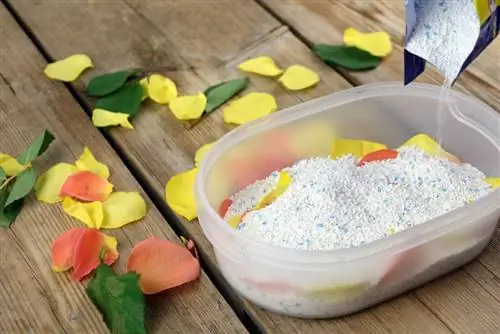
Silica gel in powder form can be used in the same way as dry s alt. Flower heads to be dried this way should be dry to the touch, not damp. It is advisable to leave a few centimeters of stem on the flowers so they are easier to handle. In addition to the silica gel or s alt, you need a container that is not too large and can be closed.
- Depending on the size of the flowers, fill the container a few centimeters with desiccant
- Place the plant material on top
- Shouldn't touch each other
- Sprinkle the powder or s alt over the petals
- Must be completely covered with it
- There should be no voids left
- Finally, close the container
- Place in a dry and warm place for two to three weeks
- The drying process takes about three to four days
The flowers can then be removed and shaken gently to remove any remaining desiccant. Silica gel and s alt do not necessarily have to be disposed of afterwards. Both can be easily reused. All you have to do is put it in the oven at 120 degrees for about an hour. After it has cooled, pour it into an airtight container. Instead of s alt or silica gel, you can also use washing powder for preservation. The application is the same.
Tip:
The advantage of silica gel and dry s alt is that the color of the petals is best preserved. It is best to wear gloves when using silica gel as it can cause skin irritation in sensitive people.
In the air
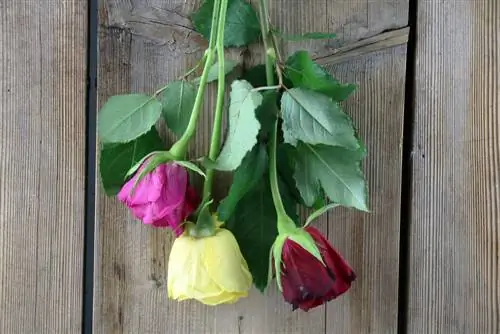
The classic method is air drying. It is particularly suitable for whole flowers and less for individual flowers. To ensure they retain their beautiful, natural shape, they should be dried upside down, i.e. with the flower facing down. Either you tie them together individually or in small bunches on the stems. Then hang them up in a dry and warm place, for example in an attic or in the boiler room. Drying may take some time. You can tell whether the drying process is complete by a slight rustling sound as soon as you touch it. Preserved this way, they stay attractive for a few months.
Tip:
To tie it together, it is advisable to use an elastic band and not traditional twine. As is well known, a flower shrinks during the drying process and could then slip out of the binding, which is unlikely to happen with rubber.
With candle wax
The wax method requires a pot for the water bath, a heat-resistant bowl or can and of course candle wax. This can be leftover candles or wax from the craft store. First, water is heated and the wax is melted in a water bath. It should not get hotter than 60 degrees. Then carefully dip the flowers upside down into the liquid wax and let them drip briefly. Then you put them on some newspaper to dry.
Tip:
The disadvantage of this method is that the flower heads become relatively heavy due to the wax and will probably discolor.
In the oven
Preservation in the oven is probably the quickest way to preserve food. It is primarily used to dry individual petals, for example of roses, but is also suitable for entire plants. All you need is a baking tray and some sand to spread on it. The respective plant material is then placed on the sand at a sufficient distance.
Now put the tray in the oven preheated to 40 degrees. Individual petals dry after about 30 minutes. For whole plants it takes longer, usually several hours. The duration depends primarily on the quantity to be dried and the type of flower in question. Varieties with many petals, such as cornflowers or chrysanthemums, are best suited for this method.
In the microwave
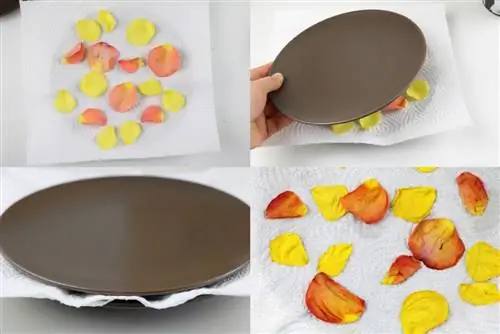
For the very impatient, the microwave is ideal for preserving. Individual petals or smaller species with simple and flat flowers such as pansies, geraniums or daisies are particularly suitable for this. What you still need is kitchen paper and newspaper as well as two ceramic tiles that should not be larger than 20 x 20 cm. The tiles must be able to rotate freely on the microwave plate.
- First cut newspaper and paper towel to tile size
- Put a layer of kitchen paper and newspaper on each tile
- Lay out the fresh flowers on top
- Then cover again with newspaper and kitchen paper
- Put the second tile on top, but do not press it on
- Now put the whole thing in the microwave for about 60 seconds
- Duration of drying depends on size and plant type
- Extend by another 30 or 60 seconds if necessary
- Let dried flowers cool in the air for about a day
Pressed in a book
The method with the least effort is to press it into the thickest possible book. You open the book, place a piece of kitchen paper or blotting paper on the open book page and place the plant material on top. You then cover this again with a layer of kitchen paper and close the book. If the book is rather light, you should weigh it down or press it between thicker books. After about a week, the blotting paper needs to be changed and if necessary repeated weekly. Drying is usually complete after about three weeks. The disadvantage of pressing is that the natural shape of the flowers is lost.
Plants suitable for preserving
Many plants produce beautiful flower heads. However, the shelf life of not all of them can be extended by preserving them. All varieties that are particularly thirsty, such as lilies and tulips, are unsuitable. All types of strawflowers are best suited as they naturally contain little moisture. Meadow flowers such as hydrangeas, roses, asters, carnations and lavender as well as heather and gypsophila can also be preserved using these methods.

